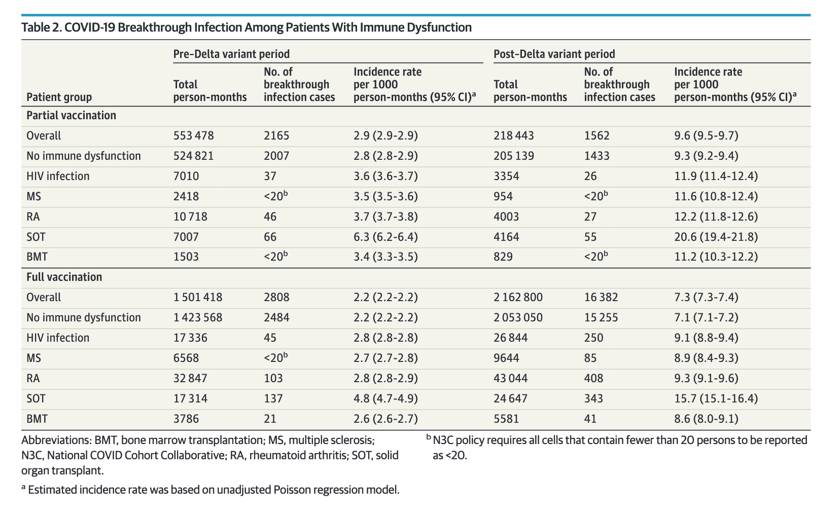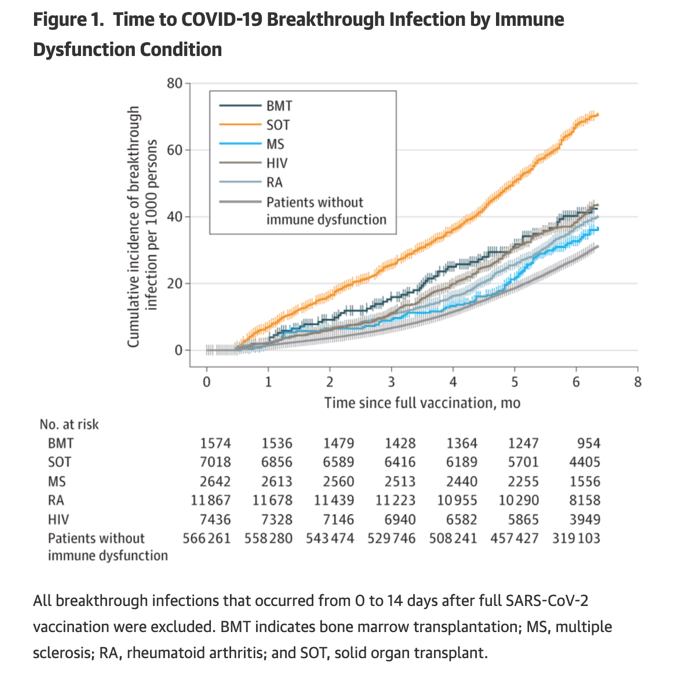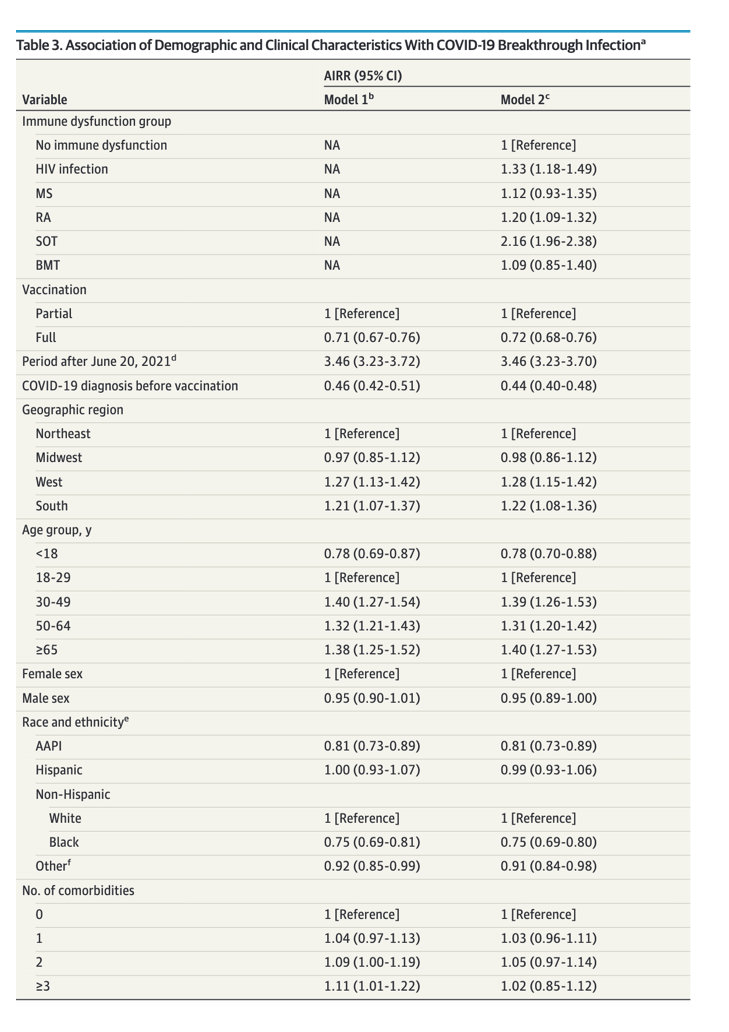| |
Association Between Immune Dysfunction and COVID-19
Breakthrough Infection After SARS-CoV-2 Vaccination in the US
|
| |
| |
Download the PDF here
JAMA Intern Med. Published online December 28, 2021
Jing Sun, MD, MPH, PhD; Qulu Zheng, MS; Vithal Madhira, MS; Amy L. Olex, MS; Alfred J. Anzalone, MS; Amanda Vinson, MD; Jasvinder A. Singh, MD;
Evan French, BS; Alison G. Abraham, PhD; Jomol Mathew, PhD; Nasia Safdar, MD, PhD; Gaurav Agarwal, MD, MSPH; Kathryn C. Fitzgerald, ScD; Namrata Singh, MD; Umit Topaloglu, PhD; Christopher G. Chute, MD, DrPH, MPH; Roslyn B. Mannon, MD; Gregory D. Kirk, MD, MPH, PhD; Rena C. Patel, MD, MPH; for the National COVID Cohort Collaborative (N3C) Consortium
Question Is immune dysfunction associated with an increased risk for COVID-19 breakthrough infection after SARS-CoV-2 vaccination?
Overall, 1.2% of patients had a breakthrough infection in 3 months and 2.8% contracted it in 6 months after completing vaccination. People with HIV infection had 33% increased risk, but CD4 and viral load were not considered in this analysis, the authors told me they will look at that. The observed increase in odds of a breakthrough infection with any of these immunocompromising diagnoses was independent of age, sex, and other comorbidities.1 However, the absolute rates in all vaccinated persons remained low, as the highest breakthrough infection rate in fully vaccinated immunocompetent persons during the Delta variant wave was 7.1 per 1000 person-months.
People with HIV infection (AIRR, 1.33; 95% CI, 1.18-1.49), rheumatoid arthritis (AIRR, 1.20; 95% CI, 1.09-1.32), and solid organ transplant (AIRR, 2.16; 95% CI, 1.96-2.38) had a higher rate of breakthrough infection.
Older age, female sex, and a higher number of comorbidities were significantly associated with a higher likelihood of breakthrough infection. Specifically, risk for breakthrough infection increased by 30% to 40% among patients 30 years or older compared with those aged 18 to 29 years. Although risk for a breakthrough infection increased with greater number of comorbidities, this risk was associated with and notably attenuated by immune dysfunction status (Table 3, model 1 vs model 2).
Compared with people without immune dysfunction (Table 2 and Table 3), those with immune dysfunction had a higher rate of breakthrough infection after receiving partial or full vaccination.
A recent study reported an increased risk for severe COVID-19 infection in persons living with HIV that was associated with more advanced immune deficiency.11 Persons living with HIV, especially those with advanced immune deficiency, should be considered at a higher risk, comparable to other patients with immune dysfunction, in guidelines to prevent a COVID-19 breakthrough infection.
We believe the findings provide robust evidence to support the CDC recommendation of a booster vaccine dose in persons with immune dysfunction. Recent studies indicated that patients who underwent SOT experienced weak immune responses to 2-dose SARS-CoV-2 vaccines,21,22 but 3 doses of an mRNA vaccine may improve immunogenicity.20,34 Specifically, the detection of anti–SARS-CoV-2 antibodies increased from 40% to 68% after the third dose of an mRNA vaccine in patients who underwent SOT.20 Although a third dose considerably improved the immune response among SOT recipients, the prevalence of antibody response was still substantially lower in that study than in the general population (<70% vs >90%, respectively).20 Severe immunodeficiency in some patients may preclude the appropriate antibody response regardless of the number of vaccine doses given.



|
|
| |
| |
|
|
|